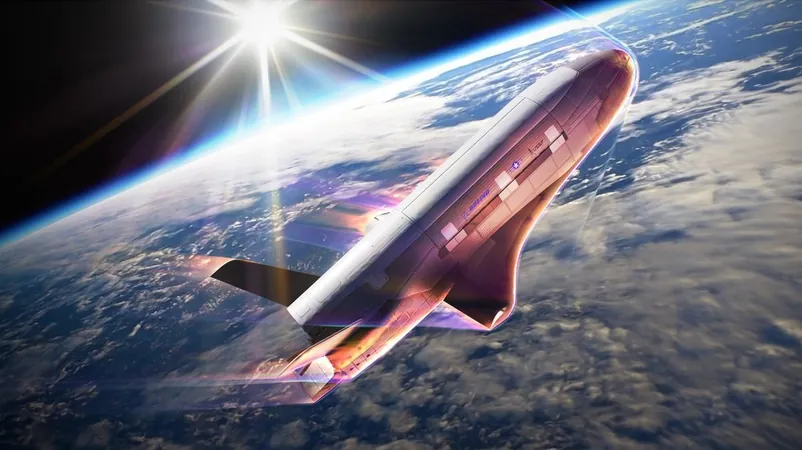
The X-37B: Unveiling the Secrets of Space Force's Advanced Aerobraking Techniques!
2024-11-10
Author: Sophie
The United States military's enigmatic X-37B space plane has taken a bold step into the spotlight with exciting news regarding its operations. In a recent statement, Boeing and the U.S. Space Force have revealed that the X-37B is set to embark on a series of "aerobraking" maneuvers aimed at lowering its orbit and ensuring the safe disposal of redundant hardware before its eventual return to Earth.
In a new video released by Boeing, details of the aerobraking process were unveiled. An engineer highlighted the significance of the maneuver, explaining how it utilizes atmospheric drag to change the X-37B's altitude. “Aerobraking allows us to safely dispose of service module components while adhering to established standards for space debris mitigation,” the Boeing representative stated.
Typically, satellites rely on onboard thrusters to execute orbital changes, a process that consumes precious propellant and limits their capabilities. However, the innovative technique of aerobraking takes advantage of the friction generated by Earth’s atmosphere. John Ealy, a Boeing engineer, explained, “By employing atmospheric drag, we can gradually step down our apogee until we achieve the desired orbital altitude, saving significant amounts of propellant in the process.
In an eye-catching animated video, viewers witnessed the X-37B adjusting its attitude so that its broad underside faces forward, showcasing the spacecraft's unique design. As it encounters the atmosphere, the underside glows orange from the heat generated by friction, highlighting the intense processes at work.
U.S. Space Force leadership lauded the X-37B team for their groundbreaking approach. “This first-of-its-kind maneuver marks a pivotal milestone for the United States Space Force as we expand our ability to operate in this challenging domain,” stated U.S. Chief of Space Operations Gen. Chance Saltzman. “The achievement reflects the team’s dedication and perseverance.”
The X-37B’s latest mission, dubbed OTV-7 (Orbital Test Vehicle-7), saw it launched aboard a SpaceX Falcon Heavy rocket for the first time, placing it in a highly elliptical orbit at an undisclosed altitude. While details surrounding the mission remain classified, it is known that OTV-7 is testing the effects of space radiation and new technologies to enhance "space domain awareness"—a critical initiative for monitoring orbital activities and other spacecraft.
Boeing's Holly Murphy emphasized the importance of continuous advancement in space exploration. She remarked, “X-37B missions have perpetually propelled our nation's space capabilities by validating new technologies that mitigate risks and inform our future space architectures. Mission seven is no exception.”
As the X-37B proceeds with its intriguing aerobraking maneuvers, the aerospace community eagerly anticipates the implications of this technology on future missions and the potential benefits for global space operations.
Stay tuned as more unfolds from this captivating story surrounding the U.S. Space Force's pioneering efforts in the realm of space exploration! Will the X-37B redefine our understanding of orbital maneuvers and debris management? Only time will tell!









 Brasil (PT)
Brasil (PT)
 Canada (EN)
Canada (EN)
 Chile (ES)
Chile (ES)
 España (ES)
España (ES)
 France (FR)
France (FR)
 Hong Kong (EN)
Hong Kong (EN)
 Italia (IT)
Italia (IT)
 日本 (JA)
日本 (JA)
 Magyarország (HU)
Magyarország (HU)
 Norge (NO)
Norge (NO)
 Polska (PL)
Polska (PL)
 Schweiz (DE)
Schweiz (DE)
 Singapore (EN)
Singapore (EN)
 Sverige (SV)
Sverige (SV)
 Suomi (FI)
Suomi (FI)
 Türkiye (TR)
Türkiye (TR)